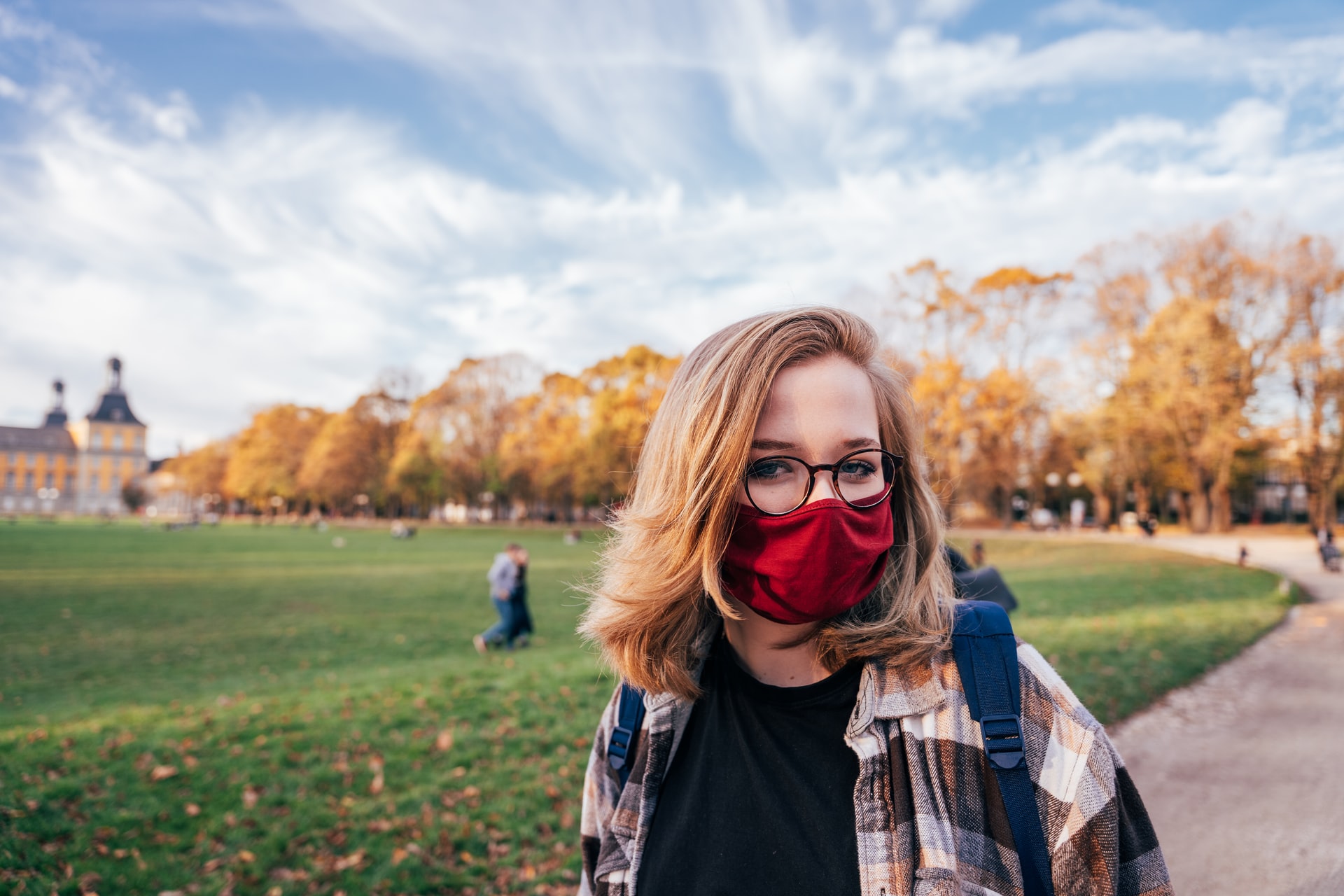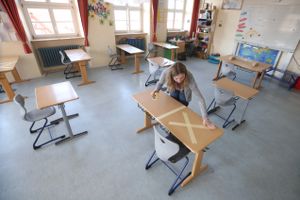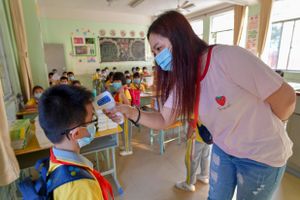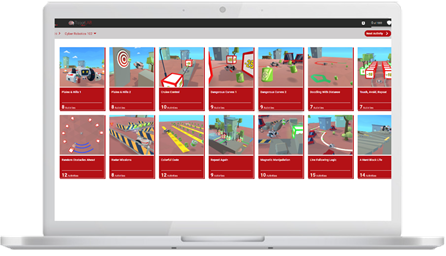Children are returning to school in countries that are weeks—or months—ahead of the U.S. in battling COVID-19. Here’s how it’s happening.
 Image source: https://unsplash.com/
Image source: https://unsplash.com/
Yesterday, the Centers for Disease Control and Prevention (CDC) released a report setting out guidelines for opening child-care programs, day camps, and K-12 schools—or the report leaked, depending on who you read.
The guidelines break school reopening into three phases—each with incrementally more relaxed rules, if infection rates are sufficiently low—but the big picture provides some good news: the recommendations reveal a path forward for schools to reopen, albeit with restrictions.
High-touch surfaces, toys, drinking fountains, and school buses should be cleaned frequently, the CDC says; playgrounds and cafeterias should be closed or used in staggered shifts, and field trips should be canceled; health screenings and body temperature checks for adults and students upon arrival should be considered; cloth masks should be mandatory for staff; and good air circulation throughout the school should be a priority. If someone in the building is later confirmed to be sick with Covid-19, the CDC writes, you might consider closing the school for one or two days to allow for cleaning.
Already a few U.S. states with low case and fatality rates—Montana, Idaho, and Wyoming—have quietly announced reopening dates for some schools or school populations this year (students with IEPs, for example), though final decisions in Montana, for example, are left up to the local districts. Most of the country’s K-12 schools will remain closed until at least the fall.

In parts of Western Europe and Asia, though, where Covid-19 touched down weeks, and in some cases months, earlier than in the U.S., the threat from the virus has gradually diminished—and schools have reopened to welcome students and teachers into classrooms. Reports from major news publications indicate that even with the strict new rules, children and teachers are generally happy to be back, but the reopenings have not been without controversy: In Denmark, some parents have protested, reported Patrick Kinsgley for The New York Times, and in Tel Aviv some teachers have pushed back over health and safety concerns, wrote Steve Hendrix in The Washington Post.
A recent article by Business Insider’s Emily Cavanagh peeked inside the equivalent of K-12 schools operating around the world, from Taiwan to Denmark, China, Norway, and Israel, and looked at the common safety precautions in place. We also looked at recent coverage from The Washington Post, the Los Angeles Times, CNN, NBC, and The New York Times to get a better picture of the state of schools internationally.
DROP-OFF AND ENTRANCE PROTOCOLS
We’ve been hearing about staggered start times, or alternate day attendance, ever since California Gov. Gavin Newsom broached the topic mid-April, as reported in the Los Angeles Times.
In Israel, as some schools began to open as the country’s infection rate declined, staggering arrival times have reduced the crowding that often occurs as buildings open, The Washington Post’s Hendrix reported. Other schools are increasing the number of school entry points to cut down on congestion.
Meanwhile, in Denmark, where many schools have been open since mid-April—it was “the first country in the Western world to reopen its elementary schools since the start of the coronavirus pandemic,” according to The New York Times’s Kinglsey—there’s another big change: Parents aren’t allowed in the building.
TEMPERATURE SCANS FOR ALL
Teachers, students, and parents are subject to temperature scans at the door—and in some countries, several times throughout the day—often from temperature guns that measure heat coming off the body, though there are concerns about the reliability of these devices outside carefully controlled health-care settings.

The CDC guidelines recommend that schools develop protocols for isolating and transporting potentially sick adults or students: Schools should “identify an area to separate anyone who exhibits Covid-like symptoms” and set up “procedures for safely transporting anyone sick home or to a health-care facility.” In Shanghai, special isolation rooms have been set aside to separate people suspected of having the virus from everyone else, according to Business Insider’s Cavanagh.
Protecting the vulnerable is crucial. In Israel, teachers and other school staff over the age of 65, and anyone with underlying health concerns, are encouraged to stay home, The Washington Post’s Hendrix reported. The CDC mirrors this guidance: “Protect and support staff and students who are at higher risk for severe illness, such as providing options for telework and virtual learning.”
SOCIAL DISTANCING LIVES ON
Social distancing throughout school is being enforced: In Denmark, Israel, and Norway, desks “are spaced six feet apart, which is the official recommendation for effective social distancing,” noted Cavanagh. Playgrounds, gym classes, school libraries, and even teachers’ lounges are closed in some countries.
Communal lunches are barred, in most cases, which is consistent with CDC guidelines: “If a cafeteria or group dining room is typically used, serve meals in classrooms instead. Serve individually plated meals.” In some schools, students are assigned seats in the cafeteria, which are arranged three feet apart. Buffet-style grazing is out; food is often plated and served individually, to reduce the obvious channels of transmission.
Small groups of students are often kept together for the whole day—social mixing is discouraged—and are sequestered in a single classroom to avoid congregating in hallways. In Denmark, many classes are conducted outdoors or in outdoor tents, where social distancing measures are easier to accommodate, according to CNN, NBC, and others.
SANITIZE, AND THEN SANITIZE AGAIN
Many, though not all, schools require masks for adults and students, and hand washing and sanitizing are frequent. “In Denmark, schools have installed handwashing stations outside of the buildings and students have to wash their hands at least once an hour,” Cavanagh writes, while in Norway classrooms, toys, and frequently touched surfaces are now sanitized twice daily. In another safety measure, notes Kingsley about Danish schools: “Tea ladies have the new task of touring the school with disinfectant, cleaning each door handle at least twice during school hours.”
Keep teaching and learning during COVID-19 with RobotLAB and CoderZ!

CoderZ is an online educational environment that improves students 21st century skills, while they are having fun programming their own virtual cyber robot. CoderZ and RobotLAB has different lessons to do at home! Check them out Here

